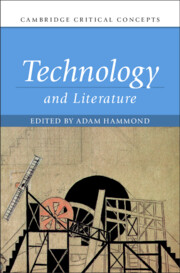Book contents
- Technology and Literature
- Cambridge Critical Concepts
- Technology and Literature
- Copyright page
- Contents
- Figures
- Contributors
- Timeline
- Introduction
- Part I Origins
- Chapter 1 Orality and Writing
- Chapter 2 Manuscript
- Chapter 3 The Hand Press, 1450–1800
- Chapter 4 The Mechanical Press, 1800–1900
- Chapter 5 The Typewriter
- Chapter 6 Literature in the Electric Age
- Chapter 7 Digital Text
- Part II Developments
- Part III Applications
- Index
Chapter 7 - Digital Text
from Part I - Origins
Published online by Cambridge University Press: 30 November 2023
- Technology and Literature
- Cambridge Critical Concepts
- Technology and Literature
- Copyright page
- Contents
- Figures
- Contributors
- Timeline
- Introduction
- Part I Origins
- Chapter 1 Orality and Writing
- Chapter 2 Manuscript
- Chapter 3 The Hand Press, 1450–1800
- Chapter 4 The Mechanical Press, 1800–1900
- Chapter 5 The Typewriter
- Chapter 6 Literature in the Electric Age
- Chapter 7 Digital Text
- Part II Developments
- Part III Applications
- Index
Summary
Media historians speak of three “medium shifts” in the history of literature: from orality to writing, from writing to print, and from print to digital. This chapter investigates the history and the significance of the most recent shift, while questioning the notion of an absolute “rupture” with orality, manuscript, and print, all of which remain vital parts of the global literary ecosystem. Drawing on Benjamin Peters’s tripartite approach to the digital in terms of pointing, counting, and manipulating, Foxman argues that the developments in the digital representation of texts have continued to challenge divisions long held to be immutable – not least, those separating content, author, and reading. As we arrive in the digital present, Foxman argues, we are left questioning all our traditional beliefs about what text is.
- Type
- Chapter
- Information
- Technology and Literature , pp. 141 - 160Publisher: Cambridge University PressPrint publication year: 2023

